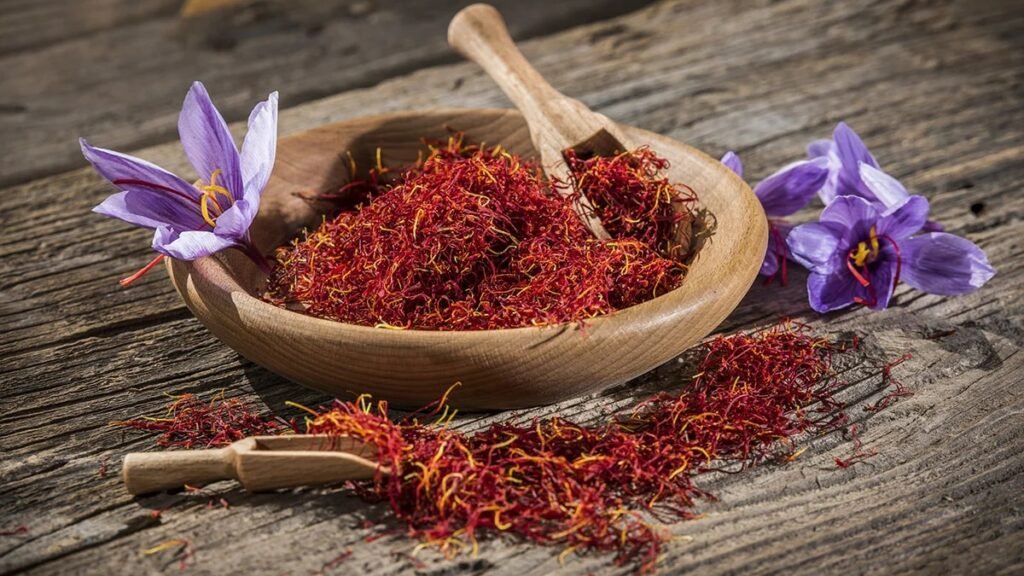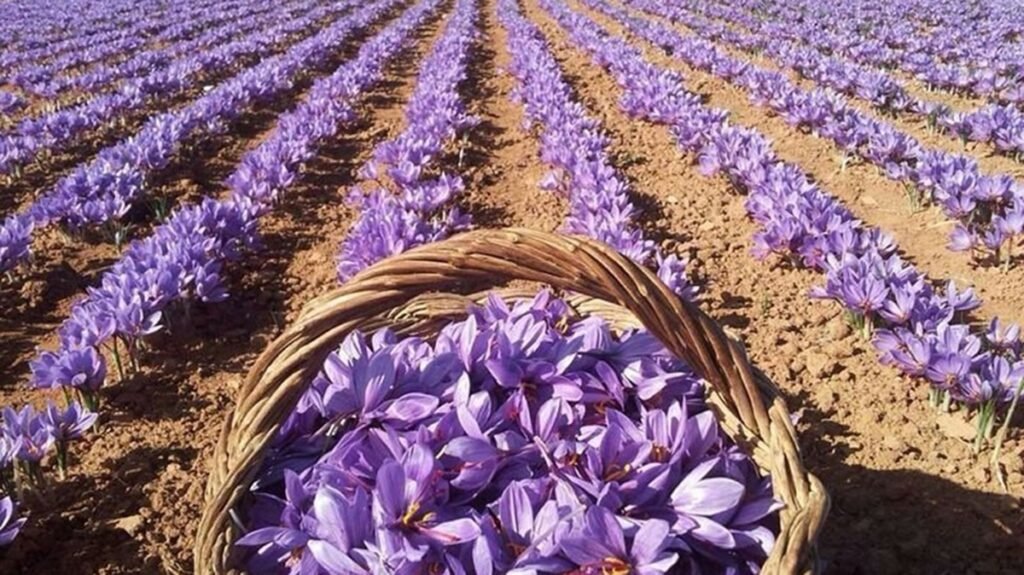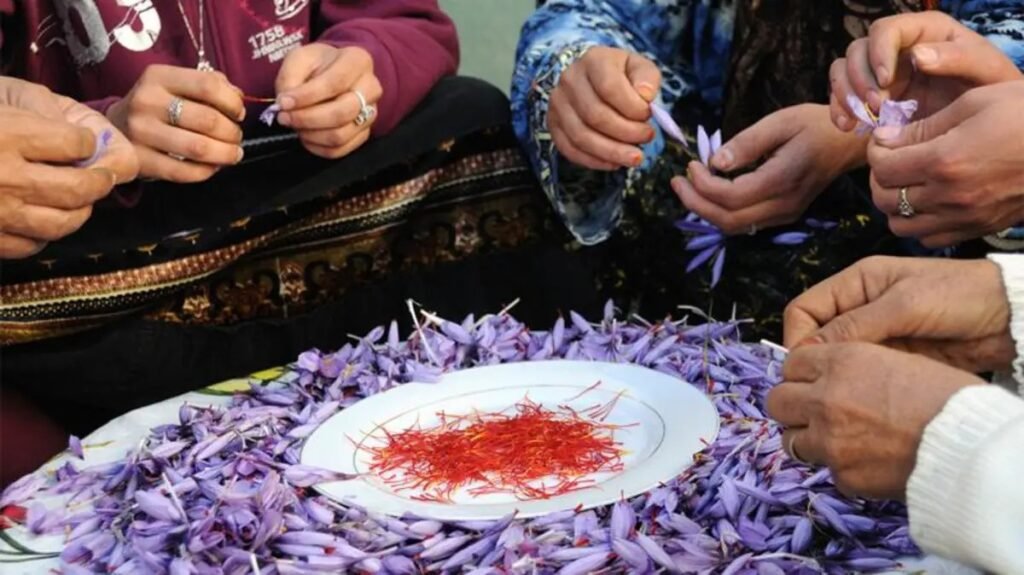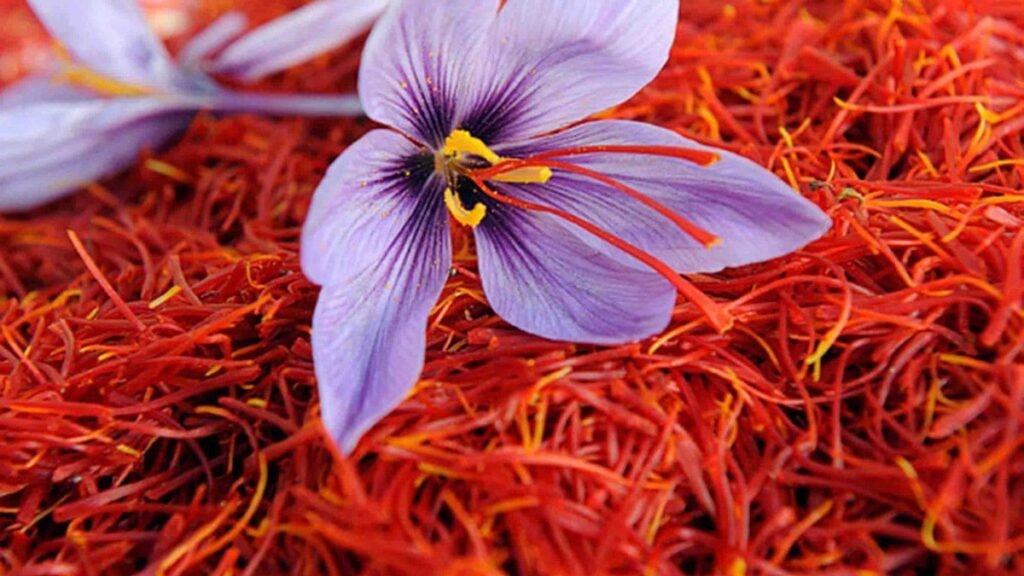Moroccan saffron: the red gold that crowns Morocco's global leadership

If the world knows yellow gold as a symbol of wealth, Morocco has another type of gold that is no less valuable and beautiful: Moroccan saffron...or as it is known worldwide as "red gold." An exceptional product produced only by rare soil, a bright sun, and skilled hands that have passed down the secrets of its cultivation through generations.
Morocco...the home of authentic saffron
For centuries, Morocco has been distinguished by the cultivation of saffron in the regions of the Anti-Atlas and High Atlas Mountains, especially in Talwin...which has become the world capital of this luxury product. In these regions, where the purity of the air meets the fertility of the soil, Moroccan saffron is born, with its delicate threads, rich in blood color, fragrant aroma, and unique taste.
It's not just ordinary farming, it's Human heritage andidentity mark It embodies the genius of the Moroccan farmer and his ability to transform nature into sustainable wealth.

Natural uniqueness and unparalleled quality
The secret of Moroccan saffron's distinction lies in its natural environment:
- Moderate mountain climate with cold winters and sunny summers.
- The altitude ranges between 1,200 and 2,200 meters above sea level, which gives the flowers unique characteristics.
- Mineral-rich, well-drained soil maintains plant quality.
These natural factors, along with inherited expertise, make Moroccan saffron superior to its global competitors, whether in terms of the strength of its color (crocin), the intensity of its aroma (safranal), or the refined taste that is unmatched by any other type.
Living heritage with a human touch

Behind every gram of Moroccan saffron is a story of patience and dedication. The harvesting process takes place at early dawn during the limited weeks of October and November, with the purple flowers collected by hand with agility and precision. Then comes the stage of separating and extracting the red threads, a delicate task often undertaken by rural women, who have transformed saffron into a generous source of livelihood and a cornerstone of the social solidarity economy.
Morocco: A global leader in saffron production
Morocco produces annually between 7 and 8 tons From saffron, it has achieved a leading position globally among producing countries, and is considered one of the most prominent exporters to European, Gulf, and Asian markets.
Moroccan saffron has gained international recognition thanks to its compliance with the highest quality standards set by International Organization for Standardization (ISO)In addition to obtaining Protected Geographical Indication Certificate For the “Talwin Saffron” product, this confirms its authenticity and opens up broader horizons for it in global markets.
From Moroccan cuisine to the shelves of the world

Moroccan saffron adds a magical touch to the Moroccan table, from tagine and couscous to fine Moroccan tea. But its value extends beyond culinary arts; it's a key ingredient in traditional healing recipes known for their soothing and strengthening properties. It's also used in the manufacture of high-end cosmetics and natural health products.
Royal support and strategies to advance the sector
Morocco realized early on that saffron was a national treasure worthy of care, so it came Green Morocco Plan then Green Generation Strategy To support this agriculture through:
- Expanding cultivated areas.
- Adopting drip irrigation techniques to conserve water.
- Organizing women's cooperatives and encouraging young people to invest.
- Promoting the product through the Taliouine International Saffron Festival, which has become a platform for promoting the quality and leading position of Moroccan saffron.
Challenges and future prospects
Despite significant successes, this crop still faces challenges related to water scarcity and climate change. However, Morocco, with its strategic vision, is investing in scientific research and agricultural innovation to address these challenges and ensure the sustainability of saffron.
The state is working to enhance the status of "red gold" as a competitive product in the global market, thereby increasing the value of exports and enhancing Morocco's image as a land of excellence and quality.
Moroccan saffron: a symbol of pride and leadership
Today, Moroccan saffron is more than just an agricultural product. It is national symbol andGlobal Ambassador It reflects the richness of Morocco's heritage and the genius of its farmers, and confirms that Morocco is capable of becoming a global leader not only in traditional agriculture, but also in sustainable agricultural innovation.
Every thread of this red gold carries the story of a generous land, a patient people, and a civilization rooted in history and looking toward the future.





